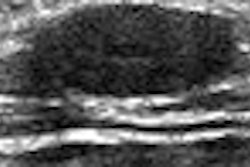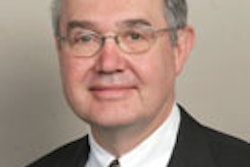The sensitivity and specificity of mammography, as well as recall rates, are constantly being scrutinized by breast healthcare specialists. Less closely watched are the specific procedures that follow mammographic screening exams and the degree to which certain procedures are more likely to result in a breast cancer diagnosis, according to a paper in the American Journal of Roentgenology.
It turns out that additional evaluation, imaging or otherwise, on the same day as a screening mammogram does lead to a higher rate of biopsy, but also a higher probability of having positive results for breast cancer, concluded Patricia Carney, Ph.D., and colleagues from the Breast Cancer Surveillance Consortium.
"A better understanding of the potential added value of additional evaluation after screening mammography may help healthcare providers prepare their patients for the likelihood of various follow-up procedures after screening, which can cause marked (patient) anxiety, even when the findings are benign," wrote Carney, who is from the Oregon Health and Science University in Portland. Her co-authors are from various institutions based in the U.S., including New Hampshire, Washington, Maryland, and California (AJR Women's Imaging, February 2007, Vol. 188:2, pp. 385-391).
For this study, the group collected data on more than a million routine screening mammograms of close to 585,000 women (mean age 57, 80% peri- or postmenopausal) from six Breast Cancer Surveillance Consortium registries. From the date of the initial screening exam, the authors looked at the women's charts for a 60-day period to collection information on radiologic events, biopsies, and biopsy outcomes. These "series of events" were classified as:
- Screening mammography only
- Screening and diagnostic mammography
- Screening mammography and sonography
- Screening and diagnostic mammography plus sonography
The group also looked at whether the exams were all done on the same day or different days, as well as how patient-reported breast symptoms influenced the series of events.
According to the results, "biopsy, diagnostic mammography, and mammography after screening mammography on the same day as the screening had a higher probability of having positive results for breast cancer," the authors wrote.
They found that women who underwent additional tests on the same day as screening had more sonographic exams (23.3%) and fewer diagnostic mammograms with sonography (8%) than those who underwent additional evaluation on different days (10.7% and 21%).
In addition, exams followed by both diagnostic mammography and sonograms were more likely to undergo biopsy (16.7%), and 20% to 32% of the exams that were followed by biopsy resulted in a breast cancer diagnosis, the authors stated. The highest proportion of breast cancers (32%) was in women who went straight to biopsy after screening mammography.
Among women with no symptoms, tumor size differed depending on when follow-up was done: a mean diameter of 14.6 mm among for those who had follow-up on the same day, 14 mm for those who had tests done on another day, and 15.7 mm for women with no follow-up.
"These findings suggest that larger, more obvious cancers were evaluated on the same day as screening, women with the largest tumors going straight to biopsy," the authors stated.
In other results:
- Sonography was more likely to follow screening mammography for women with self-reported symptoms.
- The likelihood of biopsy was greater if women did report symptoms.
- Screening exams with diagnostic mammography, without sonography, yielded the highest percentage of cancer cases.
Finally, for women with no symptoms, screening mammography with sonography performed at a later date was associated with the lowest odds of a breast cancer diagnosis.
"These findings suggest that sonography in the absence of diagnostic mammography was not helpful in differentiating benign and malignant lesions, and may have to be used more selectively, given the costs of screening associated with sonography," the authors wrote.
They pointed out that they did not assess the impact of mammographic interpretations on follow-up recommendations as the study was focused on the occurrence of events and not radiologist behavior.
"Our approach is useful in addressing the likelihood that certain events would occur under different conditions ... and, especially important, whether these events would lead to a diagnosis of breast cancer," they explained.
By Shalmali Pal
AuntMinnie.com staff writer
February 21, 2007
Related Reading
Many women fail to get regular mammograms, September 14, 2005
Breast biopsy costs big bucks, but so does cancer screening, January 19, 2005
Copyright © 2007 AuntMinnie.com



















